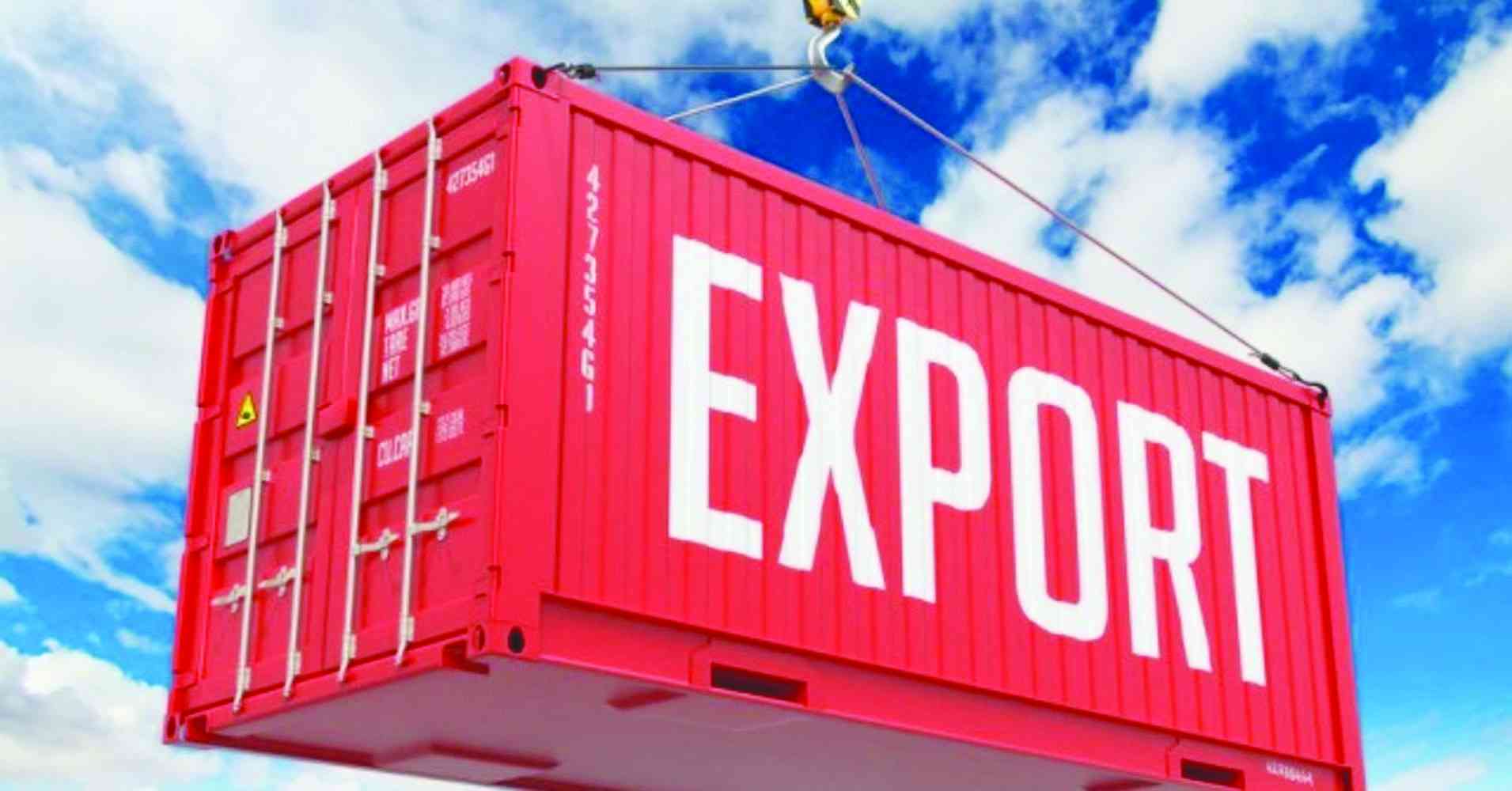
IF a country is determined to vibrantly grow its economy, it is advisable for it to be generally open and supportive of both import and export flows, which pertain to its economy.
This article discusses the critical nature of exports and imports for economic growth, with a stronger initial focus on exports.
For Zimbabwe, promoting export-led economic growth will be essential, since the country already has the potential to excel in this area.
However, in order to realise this goal, there is an urgent need to re-look and replace old policies, which were meant to prop up local industries but have only done the opposite.
As it stands, existing economic policies have placed their focus on: encouraging the local manufacturing of as many products as possible (for example, through government preference to purchase local goods), subsidies, stiff tariffs meant to protect local industries from cheaper and better quality imports, support for the beneficiation of locally-mined minerals, etc.
Unfortunately, those policies have been extremely inward-looking, and have neglected the boosting of exports, which could have produced better economic results for the country.
Localisation, tariffs and preferential government procurement can only provide brief relief. If they do not encourage Zimbabwean industries to achieve global competitiveness the results will be short-lived, as the local industries will eventually succumb to more competitive foreign firms in the long term.
With a domestic population of only 16 million, it will be difficult to build globally-competitive industries based on local demand only. For instance, in 2022, the Zimbabwe National Statistics Agency (ZimStat) estimated that about 42% of the country's population was living in poverty, at the time.
- Teachers, other civil servants face off
- Veld fire management strategies for 2022
- Magistrate in court for abuse of power
- Vungu Dam water treatment and irrigation project takes off
Keep Reading
In essence, this means that the market for non-basic goods in Zimbabwe, is made up of only nine million people (58% x 16 million of the population). Therefore, inward looking policies can only sustain small and vulnerable industries.
Role of imports
Successful export industries are dependent on the unhindered flow of imports. In other words, exporting goes hand-in-hand with importing, especially for manufactured products.
Exporting firms regularly need to import intermediate goods, add value to them, and then sell to domestic and foreign consumers. In South Africa, for example, the share of foreign value added (imports) in exports; is 28% and 12% for manufacturing and service (logistics, tourism, etc) exports, respectively.
Data on Zimbabwe is unavailable. Unhindered access to imports is generally associated with faster growth in exports. Industries, which experience a larger increase in foreign value added (import value) in their exports, through the years, also experience faster export growth, overall.
Available data shows that manufacturing sector exporters, who import (intermediate goods) have higher export values, employ more workers, and export more products to a wider range of countries than those that do not. They generally perform better than firms which only import, only export, or that are not involved in any import or export (international trade) altogether.
Imports typically enable manufacturing firms to upgrade their technical capabilities through their use of sophisticated imported inputs. The implications are clear.
Barriers, which raise the cost of accessing imports, such as tariffs, non-tariff barriers, poor logistics (rail, ports, and fuel price), etc, hamper export performance and overall economic growth.
Challenges in the abovementioned areas act as a tax to exporters. They raise the costs of importing intermediate goods and that of exporting final goods produced. This makes local firms lose their competitiveness against foreign firms.
Horizontal policies first
In order to improve trade performance, it will prove useful for the government to lose its obsession with viewing the economy in terms of traditional economic sectors and sub-sectors such as agriculture (fish farming, maize, tobacco, horticulture, etc), manufacturing (agro-processing, steel, textiles, beverages, foodstuffs, etc), mining (gold, platinum, diamonds, coal, etc), and services (wholesale, retail, tourism, education, healthcare, professional services, etc).
This approach of viewing economic activity in the form of specific industrial value chains has been prioritised for quite a long time within Zimbabwe.
For example, employee wages are set by centralised bargaining councils within each sector or subsector, government departments and agencies are defined according to sector (agriculture, mining, tourism, etc).
Government policies aimed at promoting the growth of local businesses are also targeted at particular sectors.
However, when targeting to improve the country’s trade competitiveness, this approach is not ideal. This is because sectoral (industrial) comparative advantages, which were thought to determine whether a country’s industry gets to export or not, have been proven to be a myth, through the availability of authoritative data.
It has now been proven that companies within similar sectors (industries) have extreme variations and characteristics. For example — sometimes the differences between firms in a similar sector, are greater than those between firms in different sectors. Researchers have it on good authority that the size of a firm and its productivity (value of goods it produces), are the strongest determinants of whether a firm gets to participate in international trade (imports, exports, or both) or not.
Therefore, sectoral classification for the purpose of crafting supportive export policies, is weak and generally irrelevant. The defining feature is that exporting is not industry-specific. Any firm can export, particularly if it is large or has high productivity.
Additionally, the emergence of global value chains has drawn emphasis on the importance of competence in specific tasks of the production process, instead of focusing on entire sectors (industries).
For example, although China exports the iPad, it only adds 2% to its ultimate value. It participates in the iPad’s production through the manufacture of a few inputs and the labour-intensive assembly stage of production.
The rest of production (batteries, screens, electrical components, software) and profit value, are generated in various countries such as the United States of America, Japan and South Korea, among others.
In a world of global value chains, competitiveness is determined by cost and productivity of labour, logistical costs associated with importing and exporting, access to foreign technology, access to foreign networks through multinational companies, proximity to markets, etc.
A greater focus on horizontal policies, rather than vertical (sector-specific) policies, is more beneficial.
- For example, it would be more rewarding if government policies focused on:
- Improving logistical infrastructure, including rail, roads, airports, and national borders;
- Streamlining importing and exporting procedures by reducing paperwork, speeding up processing times, lowering costs, and ensuring tariffs are both minimal and well-defined;
- Enhancing access to credit from the local banking sector; and
- Increasing the country’s attractiveness to foreign investment.
This is the ideal way to approach export promotion. The aforementioned policies can encourage local firms to increase their participation in global value chains and grow their exports, irrespective of their industry classification (sector and sub-sector). They also allow firms to reduce costs and improve their productivity.
Trade policy internal dimension
Exporters need to be preferred ahead of importers, in most cases. For example, the liquidation exporters’ foreign exchange revenues at the Reserve Bank of Zimbabwe should be handled in a fair manner which is reflective of true market prices.
Zimbabwe’s current tariff policy is not fit for purpose. This is because in some cases, the setting of tariffs is not logical.
The existing approach is fundamentally flawed as it fails to recognise that tariffs are generally a negative tool, which imposes distortions on the domestic economy.
For instance, implementing a steep tariff on steel imports, in order to protect local steel industries, will result in downstream users (bus manufacturers, construction firms, real estate, etc) having unusually high input costs.
This makes the downstream participants incapable of being globally-competitive and deprives them and the whole economy, of both domestic sales and export opportunities. In other words, steep tariffs make the cost structure of an economy too high and globally uncompetitive.
There are, however, times when tariffs are relevant. They may be gainfully used in order to protect against the dumping of goods from foreign firms, for example.
Dumping occurs when foreign firms export their goods to Zimbabwe, at a lower price than that which they sell within their home country. It is generally done in order to capture Zimbabwean market share, causing the closure of local firms, which sell the same products. Typically, once local firms have closed, the foreign firms will revert to higher prices.
Tariffs can also be used to temporarily protect inefficient local industries so that they can get a chance to catch up with foreign firms, leading to their (tariffs) eventual removal. However, when local companies go for so long, depending on tariffs as their only source of competitiveness, the country will end up rewarding their inefficiency at the cost of the whole economy.
Tariffs can also be a sensible source of government revenue, especially when charged on imports of luxury goods.
Another inefficiency associated with Zimbabwe's tariff policy is that applications for tariff adjustments (increases or decreases) are based on a case-by-case basis.
This typically causes delays and, therefore, can be an adverse cost for applicants. In some instances, it can take more than a year before an application for a tariff adjustment is implemented.
Zimbabwe’s tariff structure is relatively complex, when compared to peer countries, such as those within the East African Community (Uganda, Rwanda, Kenya, etc).
In the East African Community, the tariff structure has a simple and clear four-band structure of; 0% for raw materials and capital goods, 10% for intermediate goods, 25% for finished goods, and 35% for a list of specified products.
It is simpler and clearer than Zimbabwe’s. Making positive changes, which address such inefficiencies will be critical if Zimbabwe’s economy is to grow more vibrantly and be globally-competitive.
All tariffs may need to be reviewed down to zero, unless where there is a clear motivation to deviate. Deviation from zero tariffs may be allowed for agricultural produce, finished goods and a small set of specified products.
Trade policy external dimension
Improving export performance through enhancing access to foreign markets is critical. This can be primarily pursued through negotiating for bilateral and multi-lateral “free trade agreements”, with countries whose economies are mutually complementary to Zimbabwe.
Zimbabwe currently has free trade agreements with the European Union (EU) and Southern African Development Community (Sadc). This means that most Zimbabwean exports can access these markets duty-free.
However, even when free trade agreements are in place, it can still be the case that some exports may be blocked from accessing trade partners, through non-tariff barriers. In the EU, for example, Zimbabwean agricultural produce (particularly meat, fruit and vegetables) is subject to strict health regulations, which tend to ultimately limit the quantities exported.
Unfortunately, however, the EU’s health regulations are too stringent and have been set much higher than the World Health Organisation (WHO) and Food and Agricultural Organisation’s (FAO) standards.
Thus, intricate government-to-government negotiations will be critical, in order to remove or reduce some of those barriers. The Zimbabwean government can also help its exporters and potential exporters, to meet the stringent health requirements.
A tripartite (three-way) free trade agreement between Common Market for Eastern and Southern Africa, Sadc and the East African Community, was proposed in 2015.
It remains to be concluded. As the aforementioned three blocs await the implementation of the African Continental Free Trade Area (AFCFTA), it would be wise for them to conclude the tripartite agreement.
Except for Sadc, Zimbabwe generally faces stiff trade barriers within Africa. Thus, implementing the tripartite agreement can go a long way to increase the market size for Zimbabwe’s exports.
“In-shoring” should also be attempted, as Sadc countries establish cross-border value chains, which can produce some goods that they typically have had severe trade deficits in.
Sadc value chains, which produce industrial electrical equipment, consumer electronics (cell phones, washing machines, stoves, etc), textiles and pharmaceutical products, should particularly be prioritised.
Zimbabwe may initiate such collaborations with South Africa and Zambia, for instance. With time, they can be expanded.
In order to provide markets for the produced goods, regional governments can commit to procuring a large share of the output of such cross-border industries.
Tutani is a political economy analyst. — [email protected]











